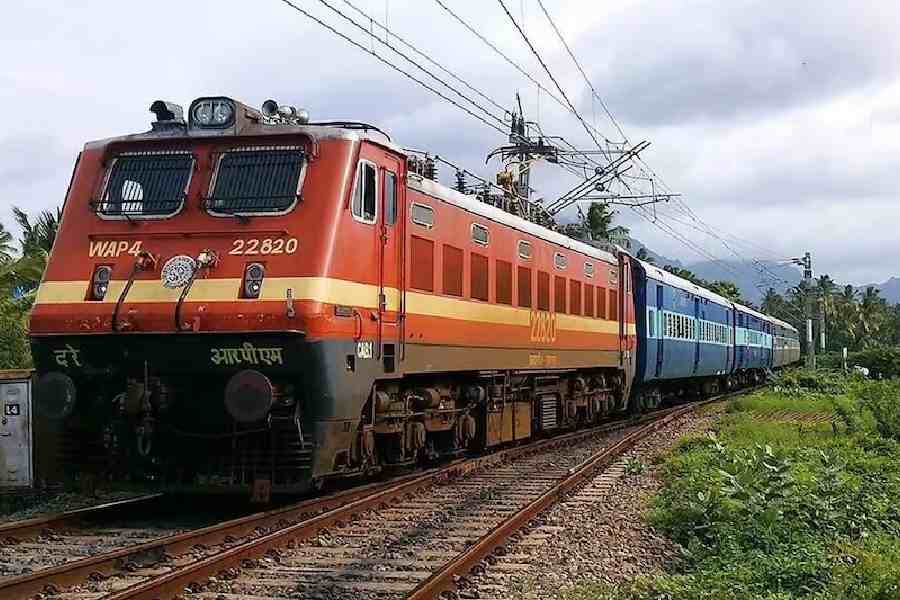A recent trial conducted to examine the efficiency of braking parameters of anti-train collision system Kavach in a semi-high speed engine at 160 kmph showed promising results, the North Central Railway's Agra Division has said.
The Kavach system, developed by the Research Designs and Standards Organisation (RDSO), can apply brakes automatically in case of an emergency when a train driver fails to act in time.
The Indian Railways is in the process of implementing this system across its network to enhance operational safety.
Under the supervision of Kush Gupta, Deputy Chief Signal and Telecommunication Engineer, North Central Railway, a semi-high speed engine, WAP-5, was fitted with the Kavach system and operated on the Palwal-Mathura section at 160 kmph on January 19, said Prashashti Srivastava, PRO, Agra Rail Division.
"The driver of the locomotive was asked not to apply brakes after observing a red signal ahead. We wanted to examine if Kavach would apply brakes on its own and bring the train to a halt before the signal," she said.
"The participating engineers and officials were happy to note that the locomotive stopped 30 metres before the red signal. It also met other safety parameters," she added.
WAP-5 locomotives are capable of pulling passenger coaches at 160 kmph and are used in trains like Shatabdi and Gatimaan Express.
The trial started at 10 am from Vrindavan in Uttar Pradesh and was completed by 1:20 pm in Haryana's Palwal in the down line direction as per the schedule. It was repeated in the Uttar Pradesh line direction from Palwal to Vrindavan between 2 pm and 3:35 pm, according to Srivastava.
Now the division will repeat the trial on a locomotive with passenger coaches very soon, officials said.
The Agra Division has developed a complete Kavach network on the 80-km stretch between Mathura (excluding the station) and Palwal. This involves the placement of RFID tags on railway tracks in station areas and other places, installation of stationary Kavach units at several places such as stations, and installation of towers and antennas along the tracks.
According to RDSO officials, a 125-km stretch in three parts between Delhi and Agra is the only stretch across the entire rail network where trains can run at a maximum speed of 160 kmph.
Trains run at a maximum speed of 130 kmph on all other sections in India.
The special track was laid here for India's first semi-high speed train Gatimaan Express, which was launched in April 2016.
On December 30 last year, the Agra Division had conducted a similar trial to ascertain the efficiency of Kavach at 140 kmph and the outcome was encouraging.
According to the railways, the Kavach system is already functional in three sections on a 1,465-km route and in 139 locomotives in South Central Railway. However, a trial cannot be conducted on that route because of speed restrictions.
The routes on which Kavach has been deployed have trains running at a maximum speed of 130 kmph. Since the railways is introducing semi-high speed trains such as Vande Bharat that can run at 160 kmph, it is essential to test the efficiency of this system at speeds above 130 kmph, the officials said.
Kavach not only helps loco pilots avoid signal passing and overspeeding but also helps trains run during inclement weather, ensuring enhanced safety and efficiency of train operations.
Except for the headline, this story has not been edited by The Telegraph Online staff and has been published from a syndicated feed.











